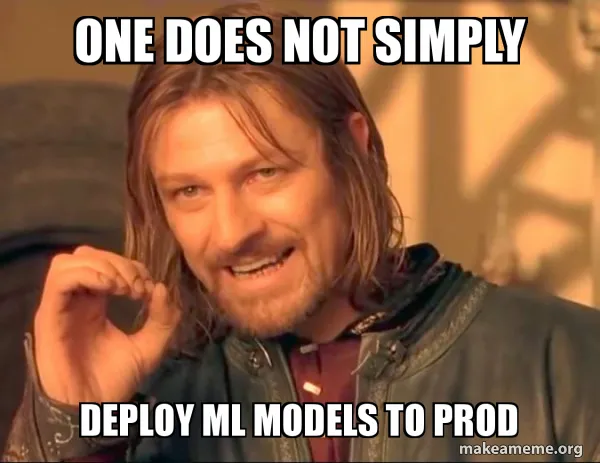Challenges of Deployment

A few of the challenges most teams usually run into during the deployment stage:
1. Differences in programming languages
The machine learning model is most certainly written in a different language (Python: TensorFlow/PyTorch) than the language in which the application is written (Java/C++/Ruby/Golang). This complicates integration because the ML model must be rewritten into the application’s native language. It is now easier to migrate ML models so that they can be seamlessly integrated with the rest of the framework, but it is best to construct the model in a common language to mitigate integration problems.
2. Coordination between different teams in a project
The most obvious barrier to overcome when deploying a model is aligning with other team members who do not have data science or machine learning experience, such as DevOps and app developers.
Model deployment is a team effort that necessitates continuous coordination and a shared vision of the end goal. Proper preparation during the early stages of ML model development would assist the MLOps/DevOps team in optimizing for deployment well in advance. It’s the joint responsibility of all the teams working on the deployment to ensure that the right model is deployed into production and avoid unnecessary delays.
3. Model decay/drift
Where it comes to the performance of machine learning models in development, model drift is a common occurrence. Model drift occurs when the model’s prediction accuracy falls below the recognized benchmark. Again, it depends on the scope in which the model is used and how those predictions are assessed, but any application will need the best version of the back-end ML model for increased productivity and performance. This becomes one of the primary factors for continuously monitoring the performance of the deployed model in production.
4. Monitoring
Monitoring must be planned ahead of the actual deployment. The framework must be in place to monitor the model’s performance on a regular schedule.
5. Version Management
When it comes to machine learning deployment, there are indeed a lot of back-and-forth tasks, and version tracking becomes an integral aspect of the overall successful deployment process. As a result, version control aids in tracking which model is the best, the various file dependencies, and the data resource pointers. Version management can be done in a variety of ways, the most common of which is Git, which is used to manage various releases and staged deployment.
